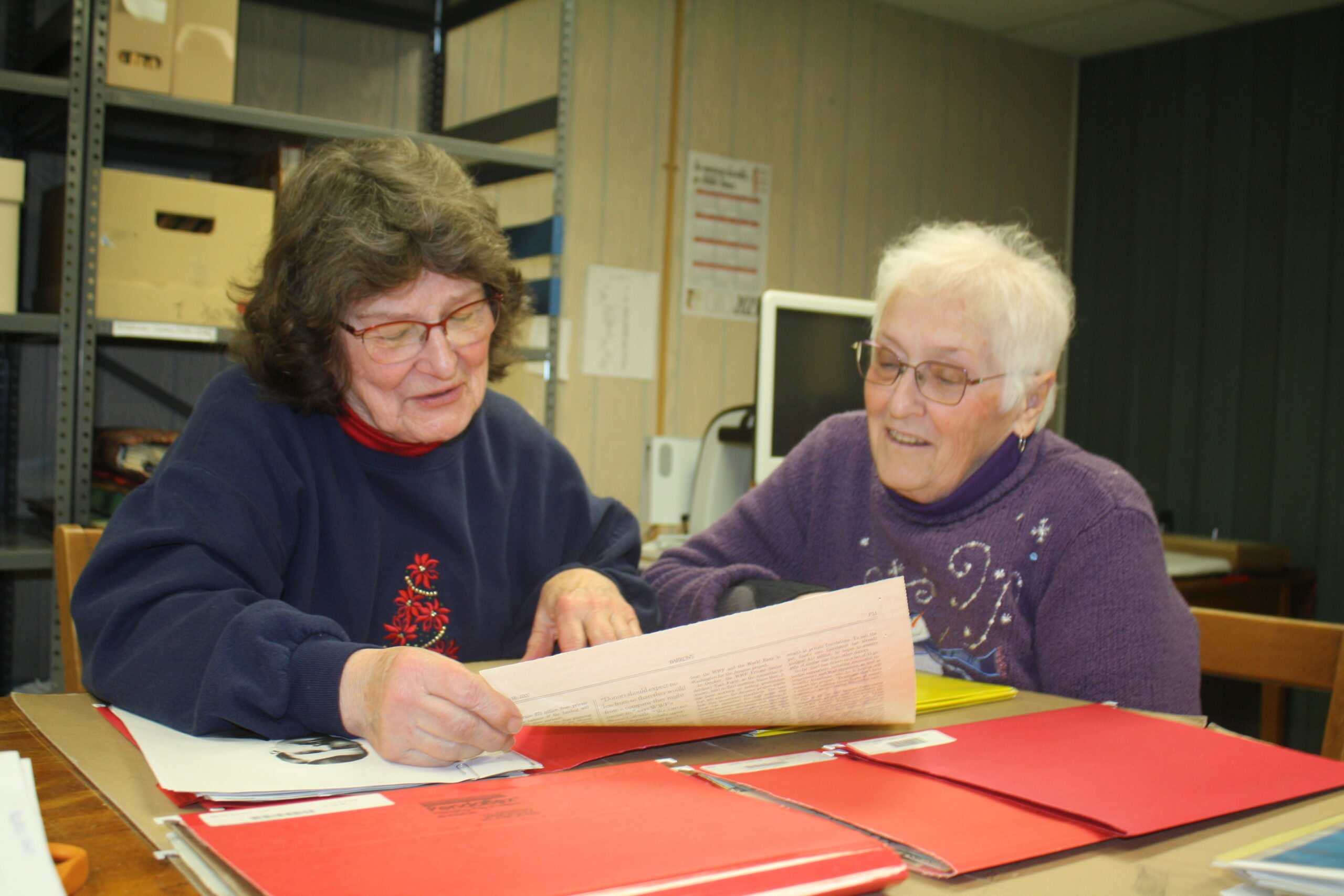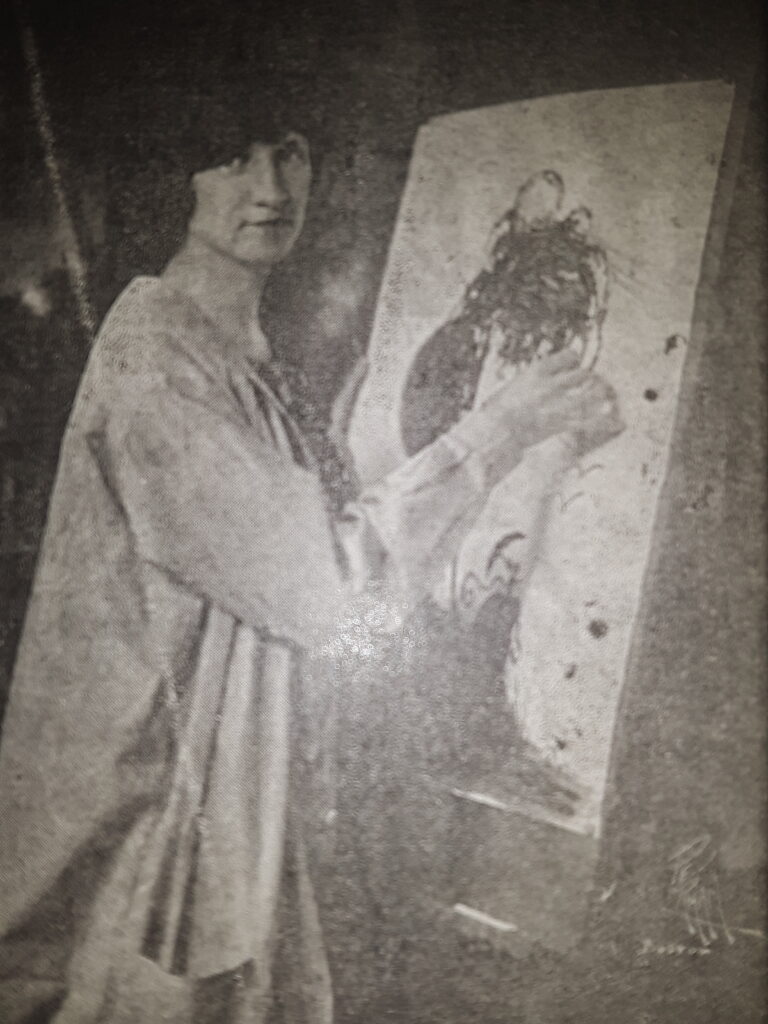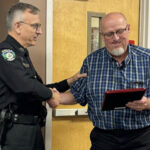
CARIBOU, Maine — Many Mainers know about Caribou’s most famous natives, U.S. Sen. Susan Collins and NASA astronaut Jessica Meir.
Collins’ accomplishments include being the first Mainer elected to a fifth term in the U.S. Senate, while Meir took part in the first all-female spacewalk in 2019.
But Caribou is also the hometown of one of the film industry’s earliest female animators, the inventor of frozen french fries, a giant of California’s oil industry and the first woman to join the Air National Guard.
The founder of Caribou’s natural history museum and a political ancestor of the Collins family who became a suffragette round out a list of residents who helped put this Aroostook city on the global map.
Bessie Mae Kelley
Nearly two years ago, film animation historian Mindy Johnson contacted Brenda Bourgoine of the Aroostook Genealogical Society to learn more about Bessie Mae Kelley’s childhood and adolescence. Johnson had discovered that Kelley was one of the earliest known film animators.

Born in Pennsylvania in 1889, Kelley’s family relocated to Caribou in 1893, where her parents started a potato farm. Though she left Caribou High School before turning 18, Kelley went on to study art at the Pratt Institute in New York City.
In a 2022 interview with National Public Radio, Johnson said that in the early 1920s Kelley worked alongside Paul Terry, who created an animated version of “Aesop’s Fables.” She created a hand-drawn, animated mouse couple, “Milton and Mary,” years before Walt Disney’s “Mickey and Minnie Mouse” became household names. Disney later said that “Aesop’s Fables” influenced his early cartoons.
Johnson visited with Bourgoine in Caribou this past summer to see where Kelley grew up. They stopped in the historic Powers Theater building on Sweden Street, where Kelley often returned to teach drawing classes, which attracted hundreds. The pair also toured Grand Falls, New Brunswick, where Kelley once visited with close friend Walter Lantz, who created “Woody the Woodpecker.”
Thanks to Johnson’s research, Caribou can now add Kelley to its list of history-making women like Collins and Meir, Bourgoine said. Though largely unrecognized in her time, Kelley remained committed to teaching animation and staying connected to her hometown. Kelley died in Minnesota in 1981, but her parents and sister are buried at Caribou’s Evergreen Cemetery.
“In her writings, Bessie spoke lovingly about growing up in Caribou,” Bourgoine said. “Even after she went to art school, she always came back.”
Johnson will publish a book about Kelley and other female animators, “The Only Woman Animator: Bessie Mae Kelley and Women at the Dawn of an Industry,” in early 2024.
Norma Parsons Erb
A 1933 Caribou High School graduate, Norma Parsons Erb began her career as a nurse, entering the U.S. Air Force in 1943.
Erb was a flight nurse during tours in France, Egypt, North Africa and the China-Burma-India Theater during World War II and the Korean War, logging in more than 3,000 hours of flying time, according to her obituary in the Aroostook Republican.
In 1956, Erb joined the New York National Guard and served with the 106th Military Air Group during tours in Germany, England, Spain, Puerto Rico and Hawaii. Erbs’ enlistment made her the first woman to ever join the National Guard.
She was also the first woman to serve as a nurse, then join and be commissioned in the Air National Guard, and the first woman member of the National Guard Association of the United States.
Erb retired as a lieutenant colonel in 1968 after 27 years of service in the New York Air National Guard. She passed away in New York in 1991 at age 76.
Mericos “Max” Hector Whittier
While coming of age on his parents’ Caribou farm, Mericos “Max” Whittier read Western novels and dreamed of a grand life in the American West.

So, in early April 1891, a 24-year-old Whittier headed to California.
Whittier had a series of jobs with oil drillers, but did not find real success until discovering oil near Bakersfield, according to a 1981 edition of “Gleanings,” a publication of Caribou Historical Society.
Whittier helped found Belridge Oil in 1911 after purchasing 33,000 acres, becoming the largest independent oil producer in the state. Whittier’s son Leland later sold the company to Shell Oil Co. for $3.7 billion, the largest corporate acquisition in U.S. history at that time, according to the Whittier Family Legacy website.
Whittier became rich enough to establish his own foundation, which has contributed to the Caribou Historical Center & Museum. Whittier died in 1925 at age 58.
No one knows exactly how much Whittier’s wealth would be worth in today’s dollars, Caribou Public Library archivist Wendy Bossie said.
“He left Caribou with $25 and died a rich man,” Bossie said.
Olaf Pierson
Whenever shoppers pick up bags of frozen french fries for dinner, they have 1923 Caribou High School graduate Olaf Pierson to thank.
In 1929, after earning his bachelor’s degree in electrical engineering from Massachusetts Institute of Technology, Pierson enlisted in the Army Air Corps and was stationed in San Antonio, Texas. He earned a master’s degree in aeronautical engineering three years later, according to his November 1993 obituary in the Aroostook Republican.
Pierson was first known as the first president of the Portland airport but his real claim to fame started when he worked for Hartland, Maine-based H.C. Baxter Co. During that time, Pierson developed the techniques used to make frozen french fried potatoes. The Bird’s Eye Co. marketed the first package of that invention in 1947.
After returning to Caribou with wife Frances and their family, Pierson went on to assist area potato farmers with a variety of inventions throughout the 1950s. Those included the first workable potato washer, a butane bottle labeler, potato top puller, a steam peeler used to peel root vegetables, a shallow fat fryer and an early mechanical potato harvester. He also developed the first portable space heater.
Pierson was also a consultant who traveled to Brazil, Greece and Poland to meet with potato processors. Closer to home, he designed and engineered the original McCain Foods in Hartland, New Brunswick, and a processing plant for Salada Foods in Toronto.
Olof Nylander
Olof Nylander is most known locally for founding and serving as the first curator for the Nylander Museum of Natural History, which reopened in October after a COVID hiatus. But Nylander’s contributions extended beyond The County.

Nylander was born in Ystad, Sweden, in 1864, the son of a shoemaker. As a boy, he enjoyed collecting and studying rocks, which led to him meeting Swedish geologist Sven Nillson, who taught him about scientific classifications.
Nylander immigrated to America when he was 16. He made a living as a painter in Massachusetts, Rhode Island, New York and Florida, all the while collecting and classifying rocks. He later became an associate of John M. Clarke, a professor at the State University of New York in Albany, where he helped classify new species of fossils.
After having moved to Aroostook, Nylander was exploring Chapman Plantation in 1893 and discovered fossils not previously known to have existed in North America, according to a 1943 Aroostook Republican article announcing his death.
Nylander founded his namesake museum in 1939, which today houses his collection, including thousands of freshwater snails, snail shell fossils and hundreds of geological specimens. Nylander traveled as far as Maine’s Casco and Penobscot bays and to countries like New Zealand, Cuba, Angola and Sri Lanka in search of new specimens. Two snail species that Nylander discovered were named for him.
Museum Director Peter Baldwin said in October that Nylander’s collection is so varied and large that he and staff were only 30 percent finished with digital cataloging.
“Places like the [Caribou] library and Historical Center have histories of the people, but the Nylander has our only natural record of the area itself,” Baldwin said.
Florence Collins Porter
Susan Collins is not the only female politician in her family who has made history.

Born in 1853, Florence Collins Porter was the second daughter of Dorcas and Samuel Collins, the latter of whom co-founded S.W. Collins Co. in Caribou. She was the great-great grandaunt of Susan Collins.
Porter’s interest in politics led to her involvement in the national women’s suffrage movement, according to Discovery Maine. In 1893, a 40-year-old Porter spoke at the World Congress of Representative Women, urging women to speak out and become political activists.
After Porter’s husband, the congregationalist minister Charles W. Porter, died in 1894, Porter taught school in Caribou and later was superintendent of schools. She briefly wrote for and then edited the Aroostook Republican before moving to California in 1900. Porter became editor of the Los Angeles Herald.
While in California, Porter became president of the Los Angeles County Suffrage Movement, and was 67 years old when women gained the right to vote in 1920.
In 1924, Porter was a delegate to the Republican National Convention, casting her vote for future president Calvin Coolidge. She was the first woman to vote in a national convention, according to “Maine Men and Women in Southern California,” a book Porter co-edited in 1913.
Porter died in 1930 at age 77.






